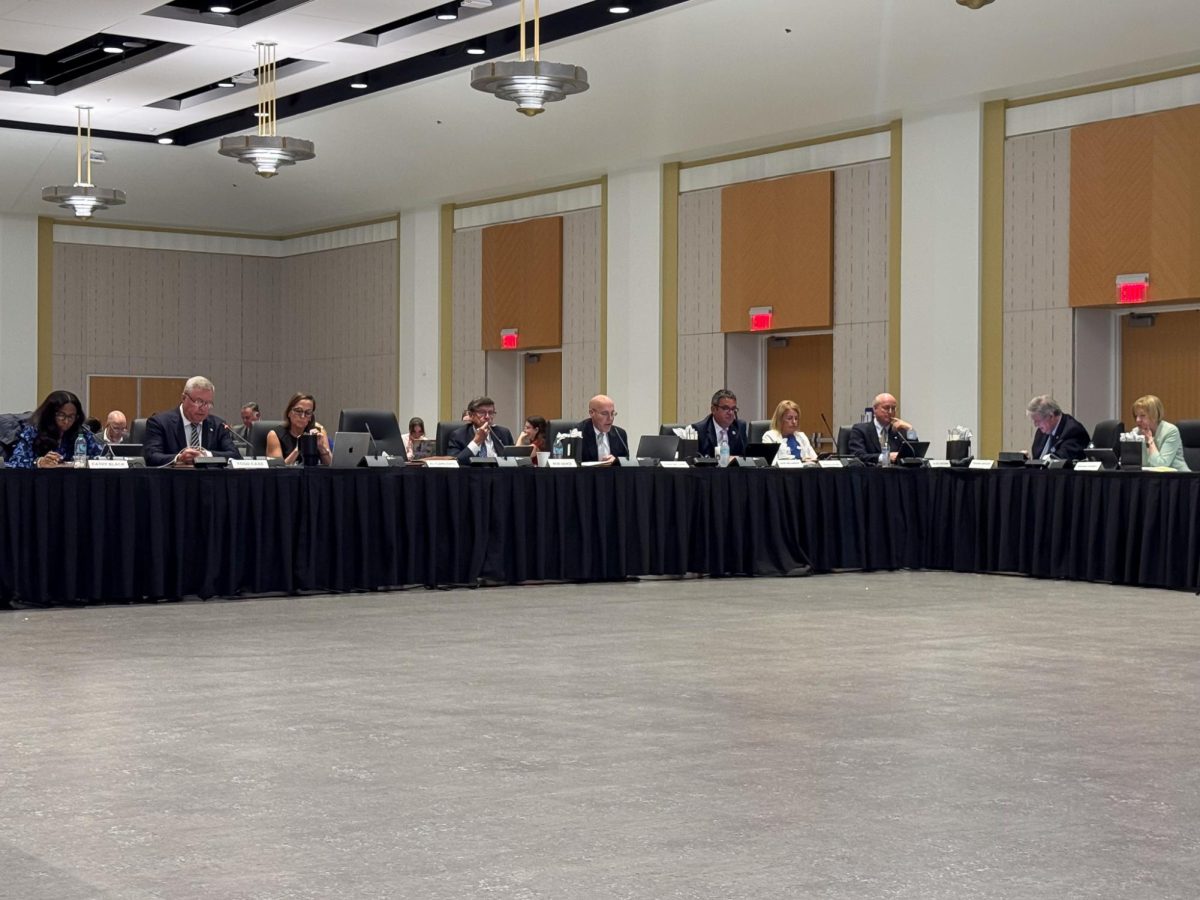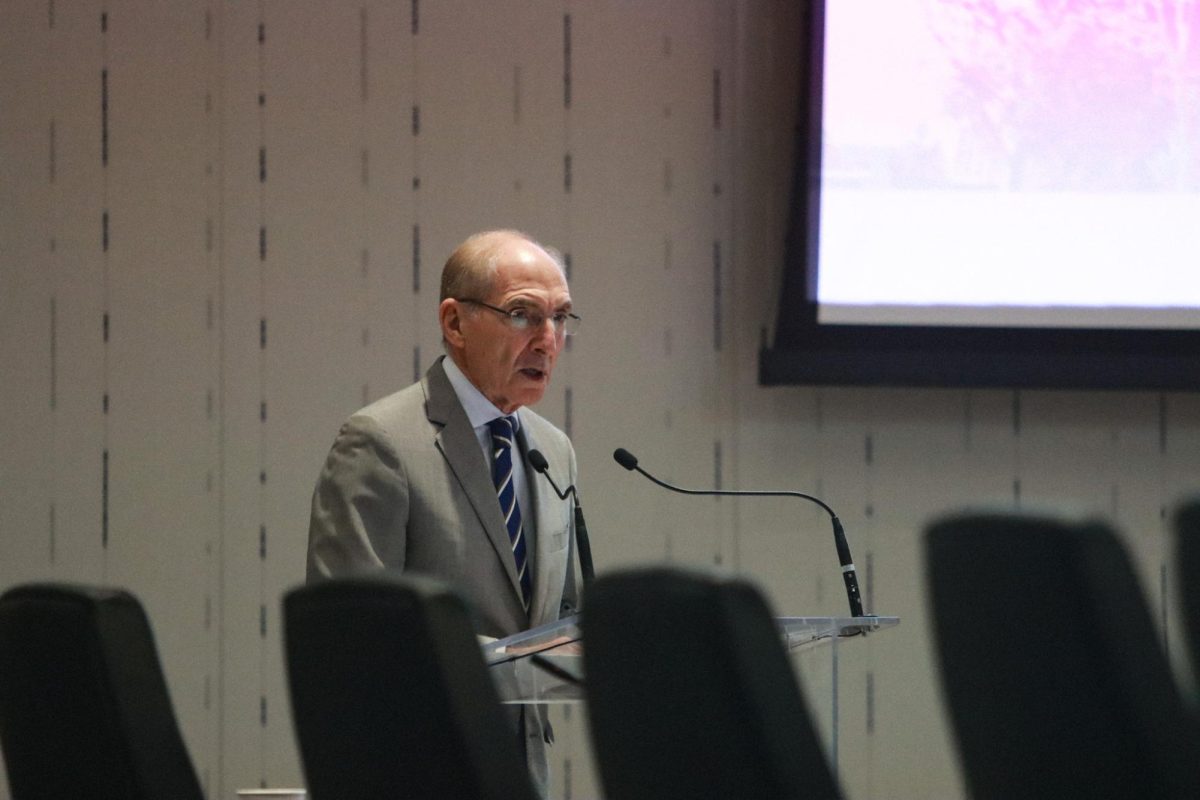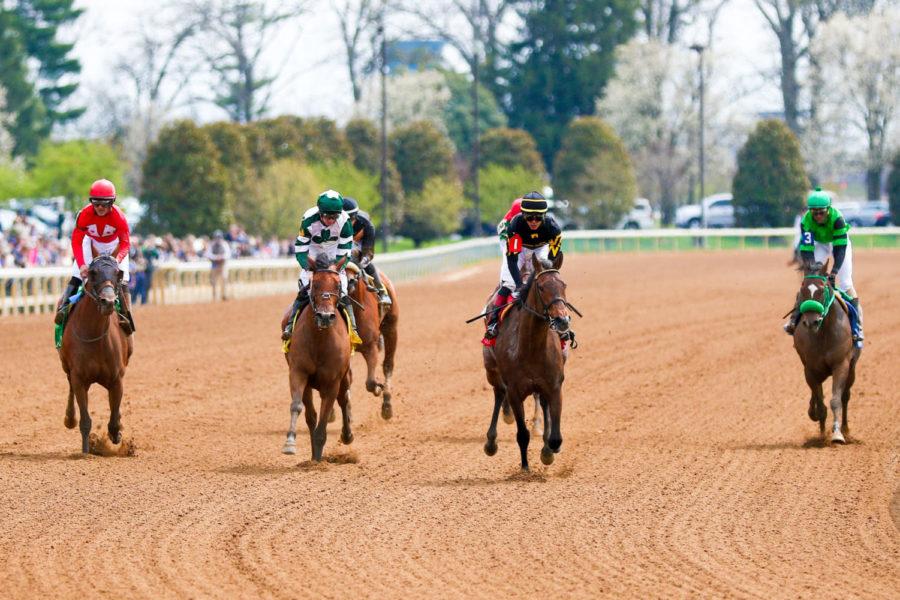Lexington horse racing community faces flaws of the sport
Horses turn a bend in the second race of Keeneland’s first of the spring meet on Friday, April 6, 2018, in Lexington, Kentucky. Photo by Arden Barnes | Staff
March 20, 2019
Since December 2018, 22 race horses have died at the San Anita track in Los Angeles, California.
As pressures for safety progression in horse racing continue to rise on a national level, members of the Lexington horse racing community may have the guidance the industry needs.
On March 14, The Los Angeles County District Attorney’s office announced it had assigned investigators to work with the California Horse Racing Board in the review of San Anita, per NBC 7 News.
Congresswoman Judy Chu (D) from the twenty-seventh district, where San Anita is located, has asked that the House Energy and Commerce Committee investigate safety at horse racing tracks across the country.
Much of the the speculation around the death of so many horses at one specific location initially revolved around the surface of the track at San Anita.
University of Kentucky’s own Director of Ag Equine, Dr. Mike Peterson, is a strong advocate for safety when it comes to his research. In October, Peterson deemed that the surface of San Anita was safe for racing and said that more recent testing results match with that of an October testing.
In a interview with the Kentucky Kernel, Peterson elaborated on the techniques he and his team use to research equine safety around the world.
“Every six months we take seven samples (of the track’s soil) from a standard pattern and make sure that the track is consistent,” Peterson explained.
On top of the semi-annual tests, tracks like San Anita also have monthly tests done. These tests employ ground penetrating radar that goes 16 feet into the ground and measure the composition of the surface layers.
According to Peterson, all of the research regarding the racing surface of San Anita showed the surface of the track was safe to race. However, the track is only one of the many components that go into the safety of a race.
This winter was unseasonably cold for the Los Angelas area, where San Anita is located. Peterson suggests that this could have been a cause for some of the deaths.
“Anything that is unusual is hard to maintain,” Peterson said.
Sudden and irregular shifts in overall race day conditions have seemed to provide trainers with unexpected obstacles in horse safety. Peterson said “the trainers struggle because they don’t know whether the horses are fit” when dealing with unique conditions, like unexpected weather.
Peterson suggested that one way tracks help to maintain safety is to give horse trainers more information about the track and its conditions, so they can make better decisions.
Unity has to come to horse racing, and another Lexington local Steven Koch, the Safety and Integrity Director for the National Thoroughbred Racing Alliance (NTRA), offered insight into how the industry already works together to provide safety for the sport.
As director, Koch leads the Safety and Integrity Alliance, a program for racing circuits to join. The program includes many notable parks such as Keeneland, Turfway and Churchill Downs.
Members of this alliance agree to a standard of care that is set by the NTRA’s Racetrack Safety and Integrity Code of Conduct. This code of conduct serves as a self-governing document that is constantly evolving.
To stay in the NTRA, racetracks must be able to pass checks preformed by an NTRA team. This team consists of experts whose area of expertise covers everything from racetrack operations to veterinarian science, according to Koch.
In recent years, catastrophic injuries to race horses have decreased to 1.4 per 1,000 starts, according to Peterson. He said this is evidence of progress and that there is a current need to protect race horses just as there is for human athletes.
“We realize that anytime a horse dies, that’s not acceptable and we work very hard to insure we do good work, good projects, good research, good operations to make that as unlikely as possible in our sport,” Koch said.
A demise in competitive horse racing is bad for horses and their owners everywhere, Koch said. Central Kentucky has had a deep-rooted history in horses, and members of the Lexington and UK community rely on the equine industry.
“Horse racing is the research engine for much of the equine economy,” Koch said. “An awful lot of horse racing dollars flow to things such as the Gluck Center and University of Kentucky Agriculture Equine.”
Conflicting opinions have led to a lot of debate surrounding horse racing, but one opinion seems to prevail: Safety needs to be the horse racing community’s number one priority. And the people of Lexington and the University of Kentucky say that it is.






























































































































































